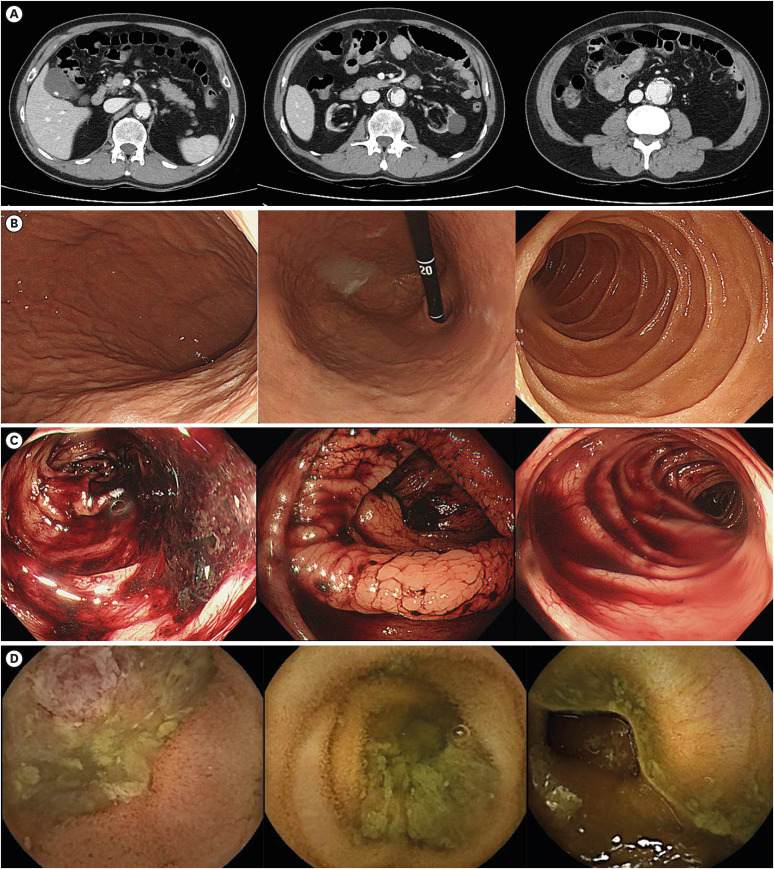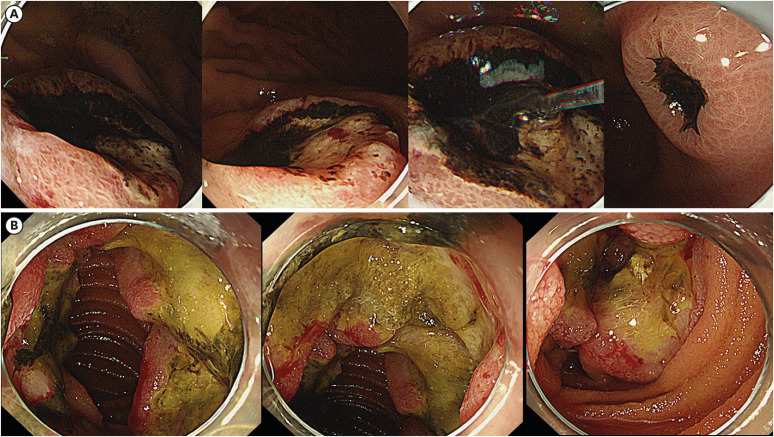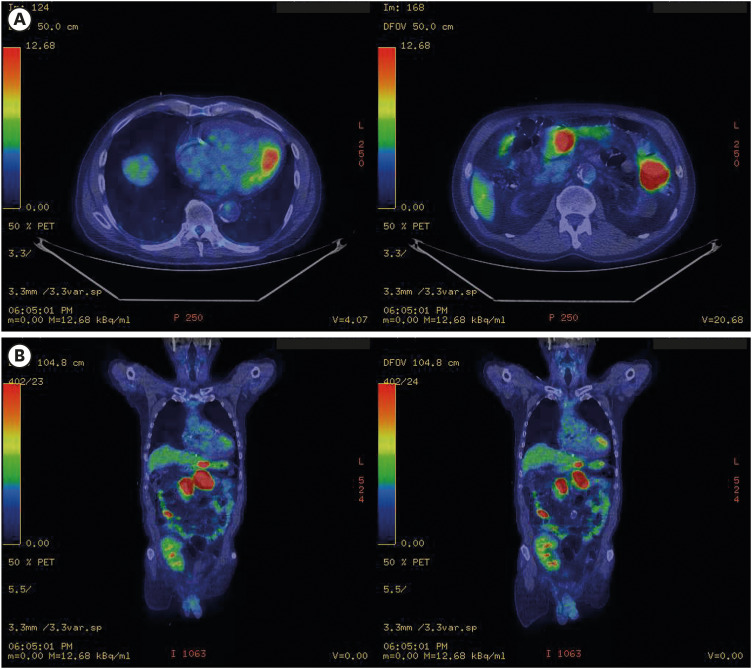J Korean Med Sci.
2024 Feb;39(6):e66. 10.3346/jkms.2024.39.e66.
Case 19: A 65-Year-Old Man With Melena and Hematochezia
- Affiliations
-
- 1Division of Gastroenterology and Hepatology, Department of Internal Medicine, Incheon St. Mary’s Hospital, College of Medicine, The Catholic University of Korea, Seoul, Korea
- 2Department of Internal Medicine, Seoul St. Mary’s Hospital, College of Medicine, The Catholic University of Korea, Seoul, Korea
- 3Division of Gastroenterology and Hepatology, Department of Internal Medicine, Yeouido St. Mary’s Hospital, College of Medicine, The Catholic University of Korea, Seoul, Korea
- 4Division of Gastroenterology and Hepatology, Department of Internal Medicine, Seoul St. Mary’s Hospital, College of Medicine, The Catholic University of Korea, Seoul, Korea
- 5Division of Gastroenterology and Hepatology, Department of Internal Medicine, Bucheon St. Mary’s Hospital, College of Medicine, The Catholic University of Korea, Seoul, Korea
- KMID: 2553309
- DOI: http://doi.org/10.3346/jkms.2024.39.e66
Figure
Reference
-
1. Xie Y, Pittaluga S, Jaffe ES. The histological classification of diffuse large B-cell lymphomas. Semin Hematol. 2015; 52(2):57–66. PMID: 25805585.2. Kim BS, Li BT, Engel A, Samra JS, Clarke S, Norton ID, et al. Diagnosis of gastrointestinal bleeding: a practical guide for clinicians. World J Gastrointest Pathophysiol. 2014; 5(4):467–478. PMID: 25400991.3. Kim SE, Kim HJ, Koh M, Kim MC, Kim JS, Nam JH, et al. A practical approach for small bowel bleeding. Clin Endosc. 2023; 56(3):283–289. PMID: 37165534.4. Teshima CW, Kuipers EJ, van Zanten SV, Mensink PB. Double balloon enteroscopy and capsule endoscopy for obscure gastrointestinal bleeding: an updated meta-analysis. J Gastroenterol Hepatol. 2011; 26(5):796–801. PMID: 21155884.5. Shim KN, Moon JS, Chang DK, Do JH, Kim JH, Min BH, et al. Guideline for capsule endoscopy: obscure gastrointestinal bleeding. Clin Endosc. 2013; 46(1):45–53. PMID: 23423225.6. Ghimire P, Wu GY, Zhu L. Primary gastrointestinal lymphoma. World J Gastroenterol. 2011; 17(6):697–707. PMID: 21390139.7. Ahn JY. Gastrointestinal tract lymphoma. Korean J Helicobacter Up Gastrointest Res. 2022; 22(1):18–28.8. Abbas F, El Kossi M, Shaheen IS, Sharma A, Halawa A. Post-transplantation lymphoproliferative disorders: current concepts and future therapeutic approaches. World J Transplant. 2020; 10(2):29–46. PMID: 32226769.9. Taylor AL, Watson CJ, Bradley JA. Immunosuppressive agents in solid organ transplantation: mechanisms of action and therapeutic efficacy. Crit Rev Oncol Hematol. 2005; 56(1):23–46. PMID: 16039869.10. Francis A, Johnson DW, Teixeira-Pinto A, Craig JC, Wong G. Incidence and predictors of post-transplant lymphoproliferative disease after kidney transplantation during adulthood and childhood: a registry study. Nephrol Dial Transplant. 2018; 33(5):881–889. PMID: 29342279.
- Full Text Links
- Actions
-
Cited
- CITED
-
- Close
- Share
- Similar articles
-
- A Case of Ischemic Colitis Results from the Bleeding on Gastric Dieulafoy Lesions
- A Case of Arteriovenous Malformation of the Pancreas
- A Case of Jejunal Leiomyoma Presenting with Recurrent Lower Gastrointestinal Bleeding
- Primary Aortoduodenal Fistula Causes Massive Melena: A Case Report
- A Case of traumatic Pancreatic Pseudoaneurysm






